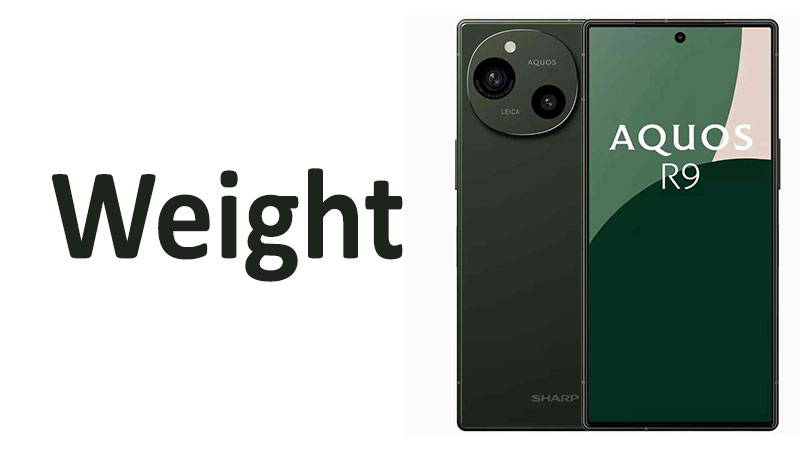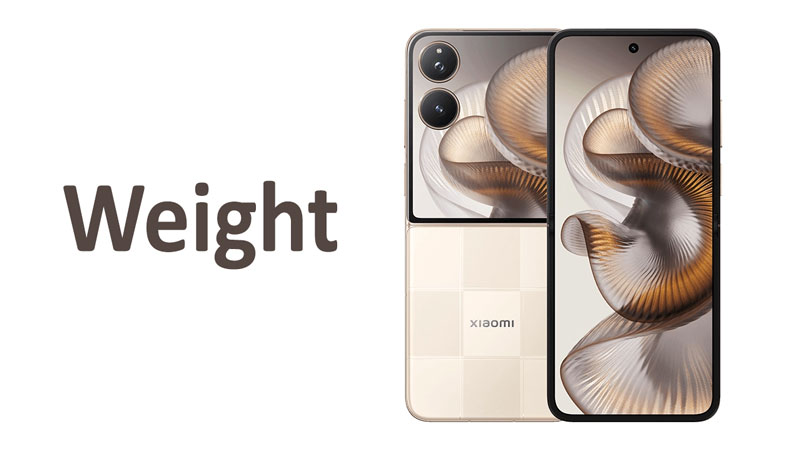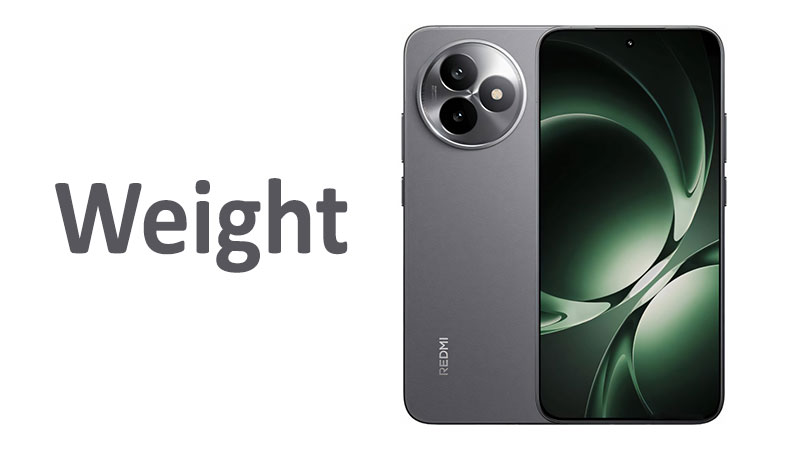The Sharp Aquos R9 weight measurement provides essential insight into its design and overall user experience. Understanding a smartphone’s mass is critical for consumers. It directly affects portability, comfort during long usage sessions, and the perceived quality of the device. The Aquos R9, Sharp’s latest iteration in the premium segment, enters a competitive market where balance is key. It must deliver top-tier features without becoming cumbersome. This comprehensive guide breaks down the precise weight of the Sharp Aquos R9 in both grams and ounces. It also analyzes the engineering decisions that determined this figure, comparing it to previous models and rival devices in the flagship and high-end categories.
The engineering challenge for modern smartphones lies in maximizing performance components while minimizing overall size and mass. Consumers expect massive batteries, durable build materials, and advanced cooling systems. These elements invariably add mass to the device. The Sharp Aquos R9 aims for a sweet spot. It offers a substantial feel without crossing into the territory of heavy, unwieldy handsets. We explore exactly how the device achieves its final figure and what this means for your daily life.
Sharp Aquos R9 Weight: The Core Measurement
The precise Sharp Aquos R9 weight stands at 195 grams. This figure places it firmly in the mainstream category for large-screen premium smartphones in the modern market. It avoids the heavy designation of some flagships. At the same time, it maintains a premium feel thanks to its dense internal components and robust outer shell.
Converting Grams to Ounces
For consumers in regions that primarily use imperial measurements, the weight of 195 grams converts directly to approximately 6.88 ounces. This dual measurement is important for global consumers. The difference between a 6-ounce phone and a 7-ounce phone can significantly impact long-term comfort. The Aquos R9 sits comfortably below the 7-ounce psychological threshold. This is impressive considering the hardware packed inside its chassis.
The physical dimensions of the device also play a crucial role in how the weight feels. The Aquos R9 measures 156 x 75 x 8.9 mm. Its thickness, 8.9 mm, is modest for a device housing a large battery and advanced cooling. This physical distribution of mass helps the 195g weight feel evenly balanced in the user’s hand. A wider, thinner phone might feel lighter, but a well-distributed 195g provides superior grip and stability.
Engineering the Balance: Why the Aquos R9 Weighs 195g
The final mass of a smartphone is never arbitrary. It represents a delicate trade-off between power, durability, and ergonomic design. Several key components contribute significantly to the Sharp Aquos R9’s 195-gram weight. Understanding these components explains why the phone cannot be lighter while maintaining its high performance and premium specifications. This analysis reveals Sharp’s priorities in designing the R9.
The 5000 mAh Battery Block
The single largest contributing factor to the Sharp Aquos R9 weight is its substantial 5000 mAh battery. Modern smartphone users demand long-lasting battery life. A higher capacity battery requires more lithium-ion material, which directly increases the device’s mass. The 5000 mAh capacity is a significant upgrade that offers all-day, and often multi-day, endurance.
Sharp made a strategic decision here. They chose increased longevity over ultra-low weight. Many flagship competitors compromise on battery size to shave off grams. The Aquos R9 sacrifices a few grams of portability to deliver reliable, long-lasting power. This is a critical point for buyers who prioritize uptime over weight savings. The 5000 mAh battery weight is an unavoidable element of its overall structure.
Premium Build Materials and Frame
The construction of the Aquos R9 speaks to its premium positioning. The device features a robust build that significantly contributes to its 195g mass. It includes a glass front protected by Corning Gorilla Glass 5. The rear panel uses the even tougher Gorilla Glass Victus 2. These premium glass panels offer excellent scratch and drop resistance. However, they are inherently heavier than plastic or lighter aluminum alloys.
The core structure utilizes an aluminum frame. Aluminum provides lightweight strength and thermal conductivity. This frame secures the internal components and provides the ruggedness needed to meet MIL-STD-810G military durability standards. This high level of ruggedness, combined with the IP68 dust and water resistance rating, necessitates a solid, dense chassis. The materials chosen enhance device protection and longevity. They inevitably contribute to the final Sharp Aquos R9 weight.
Advanced Cooling System
The Sharp Aquos R9 incorporates an internal vapor chamber cooling system. This is a crucial feature for maintaining stable performance, especially during demanding tasks like 240Hz gaming or 4K video recording. A vapor chamber consists of a sealed copper enclosure containing a small amount of liquid. The process of vaporization and condensation effectively transfers heat away from the processor.
While highly effective, adding this internal cooling mechanism adds non-negligible mass and volume to the internal architecture. It occupies space that a lighter, more basic cooling solution would not. This component adds a few extra grams to the phone. However, it ensures the high-performance Snapdragon 7+ Gen 3 chipset operates smoothly without throttling. The decision to include advanced cooling justifies a small weight penalty for performance enthusiasts.
Display Technology and Size
The display size and technology also influence the overall Sharp Aquos R9 weight. The phone features a 6.5-inch PRO IGZO LTPO OLED display. At 6.5 inches, this is a large panel, requiring a wide and tall chassis. Larger screens naturally correlate with increased weight.
Furthermore, the technology itself adds mass. The LTPO (Low-Temperature Polycrystalline Oxide) backplane enables the incredibly efficient and fast 240Hz variable refresh rate. While LTPO technology is highly efficient, the necessary layers of glass, sensors, and the durable Gorilla Glass 5 protection on the front all combine to add up. The display unit represents a significant portion of the front-half weight of the device.
Comparative Weight Analysis
The 195g Sharp Aquos R9 weight is not an isolated number. It only makes sense when placed in context with its predecessors and current market competitors. This specialized comparison helps potential buyers understand its position in terms of handling and portability against other popular smartphones. The mass of 195g is quite balanced. It is substantial enough to feel premium but light enough for comfortable daily use.
Comparison with the Sharp Aquos R8 Series
Examining the generational weight shift within the Aquos line is very revealing. The Aquos R8, the direct predecessor, was noticeably lighter at approximately 170 grams. This difference of 25 grams is significant in the hand. The R8 achieved this lower mass partly by having a smaller 6.39-inch display and a smaller 4570 mAh battery.
The increase in Sharp Aquos R9 weight to 195g directly reflects the design changes aimed at enhancing performance and durability. The R9 boasts a larger 5000 mAh battery, a slightly larger 6.5-inch screen, and the inclusion of the vapor chamber cooling system. This 25-gram increase is essentially the cost of superior battery life and better thermal management.
The R9 also has a Pro sibling, the Sharp Aquos R9 Pro. The R9 Pro is larger and heavier, often weighing around 229 grams. The Pro model typically includes a larger screen (around 6.7 inches), a more powerful flagship-tier processor, and sometimes more advanced camera hardware. The standard Aquos R9, at 195g, positions itself as the more balanced and lighter-weight option compared to its Pro variant. The R9 offers premium features without the extreme bulk of a true heavy-duty flagship.
Comparison with Key Mid-Range and Flagship Competitors
When comparing the 195g Aquos R9 to the broader smartphone landscape, its positioning becomes clear. Many ultra-premium flagships from major global brands often exceed 200 grams, sometimes reaching 215g or more, especially those with large batteries and stainless steel frames. The Aquos R9 sits below this benchmark.
The 195g mass is comparable to many high-end mid-range or “light” flagship devices. This is where the phone excels. It offers many flagship-level features, such as the 240Hz PRO IGZO OLED and the 5000 mAh battery, at a mass associated with slightly more portable devices. For example, some devices in the sub-flagship range with comparable screen sizes often hover between 185g and 199g. The Aquos R9 is perfectly competitive in this area. It feels solid in the hand, suggesting high build quality and component density, but it avoids the pocket sag associated with 220g+ devices.
The Impact of Weight on Handling and Ergonomics
Weight is not just a specification on a sheet. It is a critical ergonomic factor that impacts the user daily. The 195g mass of the Aquos R9 contributes positively to a perceived sense of quality. Lighter phones, especially those using plastic frames, can sometimes feel hollow or cheap. The Aquos R9, with its aluminum frame and glass sandwich construction, uses its 195g effectively to convey durability and premium quality.
However, the mass requires consideration for prolonged use. A 195g device is manageable for one-handed operation and long periods of reading or video watching. It does not cause rapid hand fatigue. For users who switch from an older, lighter 160g phone, the difference will be noticeable initially. For users upgrading from a 210g “Pro” model, the Aquos R9 will feel refreshingly light. The phone strikes a practical balance between the need for substance and the desire for comfort.
Advantages and Disadvantages of the 195g Sharp Aquos R9 Weight
The weight of the Sharp Aquos R9 comes with inherent pros and cons that buyers must evaluate based on their priorities. This analysis helps readers make an informed choice regarding the phone’s physical characteristics.
Pros of the 195g Weight
The 195g mass provides several distinct benefits to the user experience. First, it ensures the presence of the powerful 5000 mAh battery. This battery is a major advantage for heavy users, streamers, and gamers. The phone offers excellent battery life, a crucial utility factor that outweighs a few grams of mass for many.
Second, the weight contributes to the phone’s exceptional build quality. A higher mass often indicates the use of premium materials like glass and aluminum. It provides a solid, dense, and premium feel in the hand, which increases user confidence in the device’s durability. The materials used also support the IP68 and MIL-STD-810G ratings.
Finally, the added weight helps with internal component stability, particularly the advanced cooling system. The mass itself aids in passive heat absorption and dissipation. It contributes to sustained performance by preventing the device from getting excessively hot under load. The 195g is a mass investment in power and longevity.
Cons of the 195g Weight
While balanced, 195g is not considered ultra-light. For users accustomed to featherweight devices, the Sharp Aquos R9 weight might initially feel substantial. This slightly increased mass can lead to fatigue during very long, one-handed sessions, such as extended social media scrolling or video calls.
The phone is less “pocketable” than smaller, lighter competitors. While its dimensions are reasonable, the combined size and mass mean it has a noticeable presence in a pants pocket. Users who prefer their phone to virtually disappear when carried might find the 195g device slightly cumbersome. It sits on the heavier side of the general smartphone average, even if it avoids the extreme weight of some heavy-duty flagships.
Important Points a Buyer Should Know
A buyer considering the Sharp Aquos R9 should understand the context of its 195g weight within its full feature set. The phone is not an ultra-light device. It is a performance and durability-focused phone that is consciously designed to strike a balance between mass and utility. The weight is a necessary consequence of the superior hardware.
Durability and Ruggedness
The 195g weight is inextricably linked to the phone’s ruggedness. The combination of the aluminum frame, Gorilla Glass Victus 2 back, and IP68 water resistance creates a robust device. Buyers gain a phone that withstands environmental stresses. They should view the Sharp Aquos R9 weight as a tangible indicator of its superior build quality and reliability. If durability is a top priority, the 195g mass is a significant positive factor.
Performance and Thermal Management
The phone utilizes the Snapdragon 7+ Gen 3 Mobile Platform. This is a powerful, yet efficient, high-end chipset. The phone’s mass helps support this processor. The internal vapor chamber cooling system requires a certain size and chassis density to operate effectively. Buyers should know that the 195g mass is part of the thermal architecture that ensures sustained high performance, especially for the demanding 240Hz refresh rate display. The weight is a functional element, not a simple design flaw.
Ergonomics for Multimedia
The 6.5-inch PRO IGZO LTPO OLED display is a major draw for video enthusiasts and gamers. When holding a 6.5-inch phone horizontally for multimedia consumption, a certain mass provides stability. The 195g Aquos R9 avoids the feeling of flimsiness. The solid mass provides a reassuring grip and contributes to an immersive media experience, reducing accidental slips and movements during intense gaming sessions.
The Role of Weight in Device Aesthetics and Perception
The weight of a device plays a subtle but critical role in the user’s perception of value. For decades, heavier items often signified better quality, more robust construction, and better components. In the modern tech world, this perception still holds true to an extent.
Perceived Value and Quality
The Sharp Aquos R9 weight, coupled with its glass and aluminum build, gives it a substantial hand-feel. This immediately conveys a sense of high-end manufacturing and perceived value. It feels like a premium piece of technology. Lightweight devices, particularly those using polycarbonate, can sometimes feel like toys in comparison. The 195g mass suggests high component density and a lack of wasted internal space.
Weight Distribution
Critically, the weight of 195g is distributed evenly across the phone’s 156 x 75 mm body. Good weight distribution is more important than absolute mass. Poorly balanced devices, even if light, feel awkward and top-heavy, especially when using the camera. Sharp has balanced the large battery and camera module perfectly. This even distribution minimizes strain on the wrist during use. It prevents the phone from tipping backward or forward.
Conclusion: Balancing Performance and Portability
The Sharp Aquos R9 weight of 195 grams, or 6.88 ounces, is a deliberate and well-considered figure. It represents an engineering triumph that successfully balances the modern demands for extreme performance, all-day battery life, and premium durability. This device is not the lightest smartphone on the market. However, every gram of its mass serves a specific purpose, primarily accommodating the massive 5000 mAh battery, the resilient glass and aluminum construction, and the essential internal vapor chamber cooling system.
Buyers should view the 195g Sharp Aquos R9 weight as an investment. They are investing in a longer battery life, a more durable build, and sustained peak performance from the Snapdragon 7+ Gen 3 processor. The phone sits perfectly in the high-end category. It offers a solid, premium hand-feel while remaining manageable for daily portability. It successfully avoids the excessive mass of heavy flagships, making it an excellent choice for users who demand power without compromise on utility and long-term comfort.
Frequently Asked Questions (FAQ)
Is the Sharp Aquos R9 considered heavy for a modern smartphone?
The Sharp Aquos R9 weighs 195 grams. This mass is slightly above the industry average for a standard smartphone. However, it is lighter than many ultra-premium flagships that often exceed 200 grams. It sits in a well-balanced category.
Why does the Aquos R9 weigh 195g?
The 195g weight is mainly due to three key components. These are the large 5000 mAh battery, the premium glass front and back panels, and the aluminum frame. The internal vapor chamber cooling system also adds necessary mass for thermal management.
How does the Aquos R9 weight compare to the previous R8 model?
The Sharp Aquos R9, at 195g, is heavier than its predecessor, the Aquos R8, which weighed approximately 170g. The increased mass is a result of the R9’s larger battery and enhanced cooling hardware.
Does the 195g weight affect one-handed use of the phone?
The 195g Sharp Aquos R9 weight is generally manageable for one-handed use. Its mass is well-distributed across its 6.5-inch body. Most users should experience comfortable handling without excessive fatigue during normal periods of use.
What is the weight of the Sharp Aquos R9 in ounces?
The Sharp Aquos R9 has a mass of 195 grams, which converts to approximately 6.88 ounces. This figure confirms its solid, yet balanced, feel in the hand for consumers familiar with imperial units.



